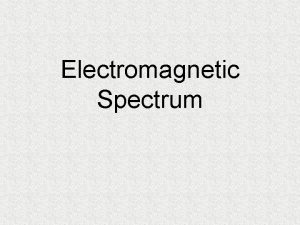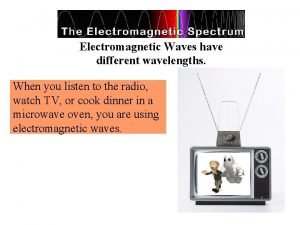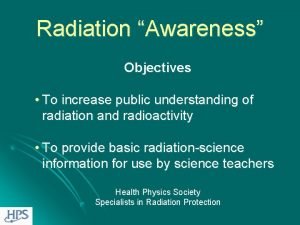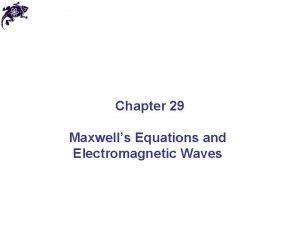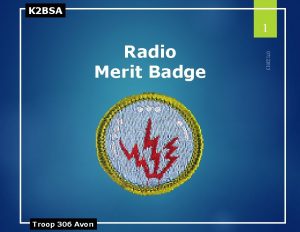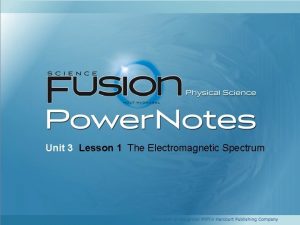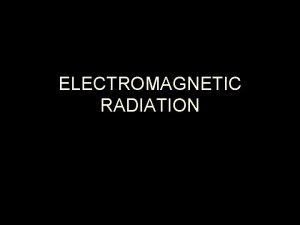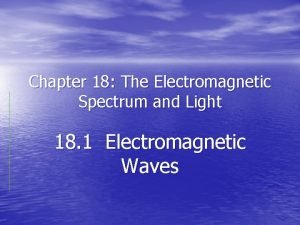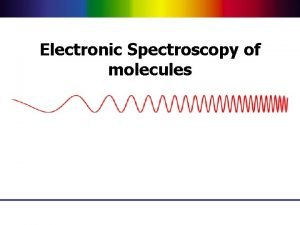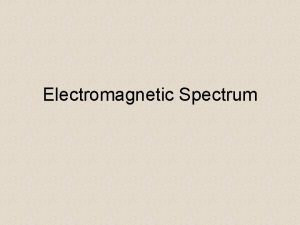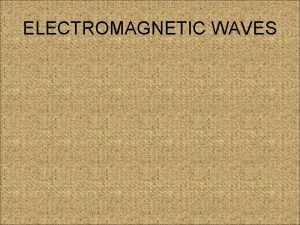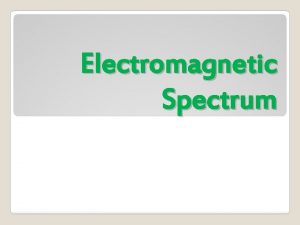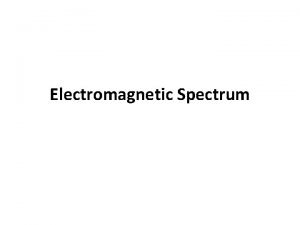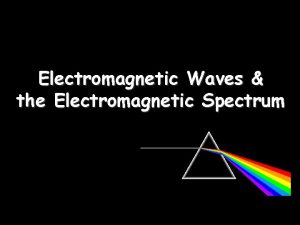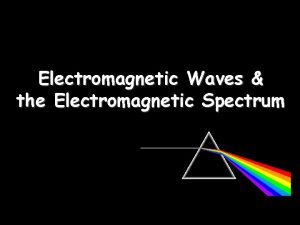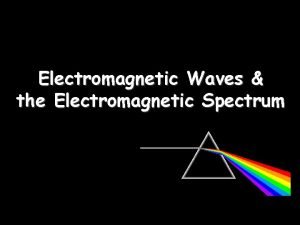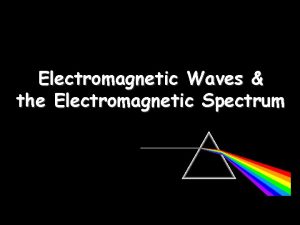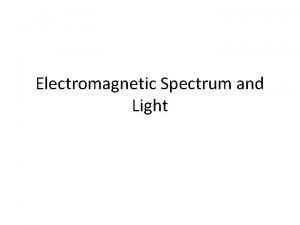Electromagnetic Spectrum WHAT IS IT The electromagnetic spectrum














- Slides: 14

Electromagnetic Spectrum




WHAT IS IT? • The electromagnetic spectrum is the complete spectrum or continuum of light including radio waves, infrared, visible light, ultraviolet light, Xrays and gamma rays • An electromagnetic wave consists of electric and magnetic fields which vibrates thus making waves.

RADIO WAVES • • • Low energy waves with long wavelengths Includes FM, AM, radar and TV waves Wavelengths of 10 -1 m and longer Low frequency Used in many devices such as remote control items, cell phones, wireless devices, etc.

RADIO WAVES � Longest wavelength EM waves � Uses: � TV broadcasting � AM and FM broadcast radio � Avalanche beacons � Heart rate monitors � Cell phone communication

MICROWAVES � Wavelengths from 1 mm- 1 m � Uses: � Microwave ovens � Bluetooth headsets � Broadband Wireless Internet � Radar � GPS

INFRARED RADIATION � Wavelengths in between microwaves and visible light � Uses: � Night vision goggles � Remote controls � Heat-seeking missiles � Thermogram—a picture that shows regions of different temperatures in the body. Temperatures are calculated by the amount of infrared radiation given off. Therefore people give off infrared rays. � Heat lamps give off infrared waves.

VISIBLE LIGHT

The only portion of EM wave able to be detected by the human eye. � Traditionally, we break white light into red, orange, yellow, green, blue, indigo, and violet (ROY G BIV) � Red light has a frequency of roughly 4. 3 × 1014 Hz, and a wavelength of about (700 nm). Violet light, at the other end of the visible range, has nearly double the frequency— 7. 5 × 1014 Hz—and (since the speed of light is the same in either case) just over half the wavelength— (400 nm).

ULTRAVIOLET � Shorter wavelengths than visible light � Uses: � Black lights � Sterilizing medical equipment � Water disinfection � Used to kill bacteria. (Sterilization of equipment) � Security images on money

X-RAYS � Tiny wavelength, high energy waves � Uses: � Medical imaging � Airport security � Inspecting industrial welds

GAMMA RAYS � Smallest wavelengths, highest energy EM waves (blocked by ionosphere) � Uses � Food irradiation � Cancer treatment � Treating wood flooring
 Characteristics of ultraviolet rays
Characteristics of ultraviolet rays The shortest wavelength
The shortest wavelength Electromagnetic spectrum nasa
Electromagnetic spectrum nasa Electromagnetic spectrum equation
Electromagnetic spectrum equation Waves produced by stars and galaxies
Waves produced by stars and galaxies Troop 306 avon
Troop 306 avon Types of radiation in the electromagnetic spectrum
Types of radiation in the electromagnetic spectrum Lesson 1: the electromagnetic spectrum
Lesson 1: the electromagnetic spectrum Electromagnetic spectrum micrometers
Electromagnetic spectrum micrometers Electromagnetic spectrum foldable
Electromagnetic spectrum foldable Wavelength formula electromagnetic wave
Wavelength formula electromagnetic wave Chapter 18 the electromagnetic spectrum and light
Chapter 18 the electromagnetic spectrum and light Electromagnetic spectrum song lyrics
Electromagnetic spectrum song lyrics Electromagnetic waves table
Electromagnetic waves table What is the electromagnetic spectrum
What is the electromagnetic spectrum
